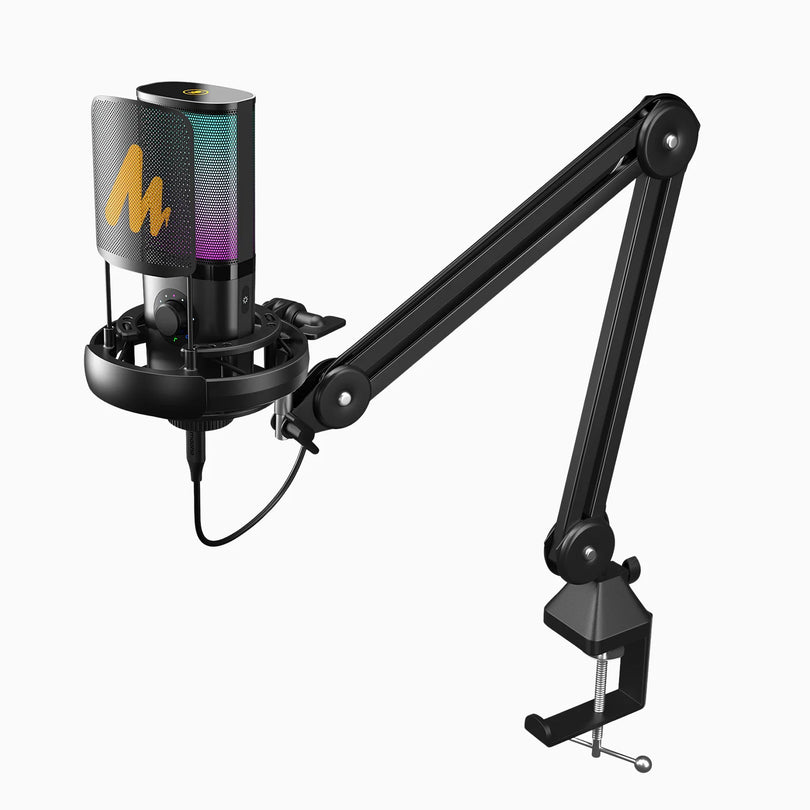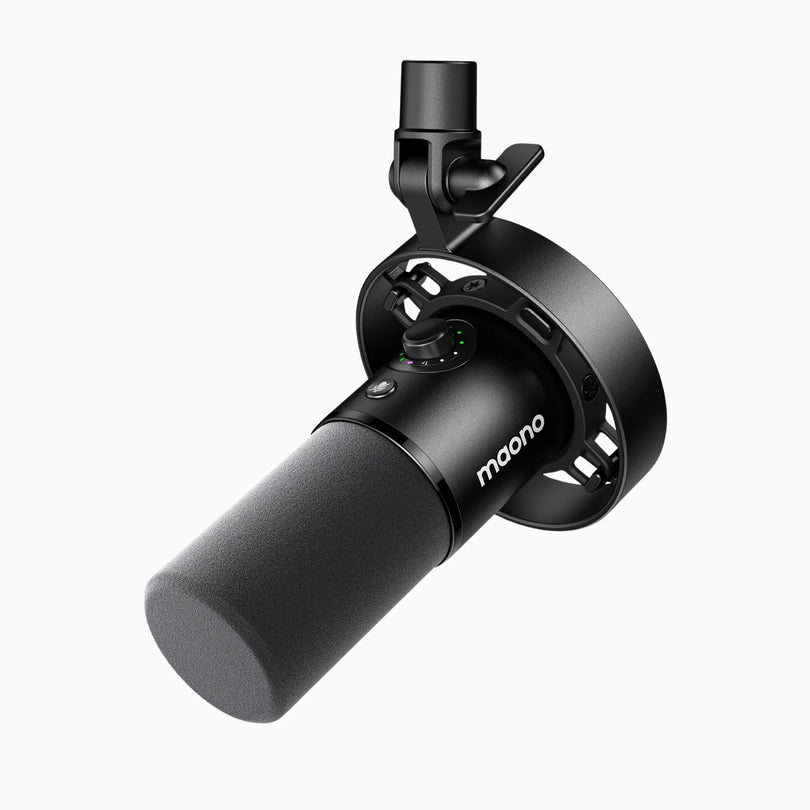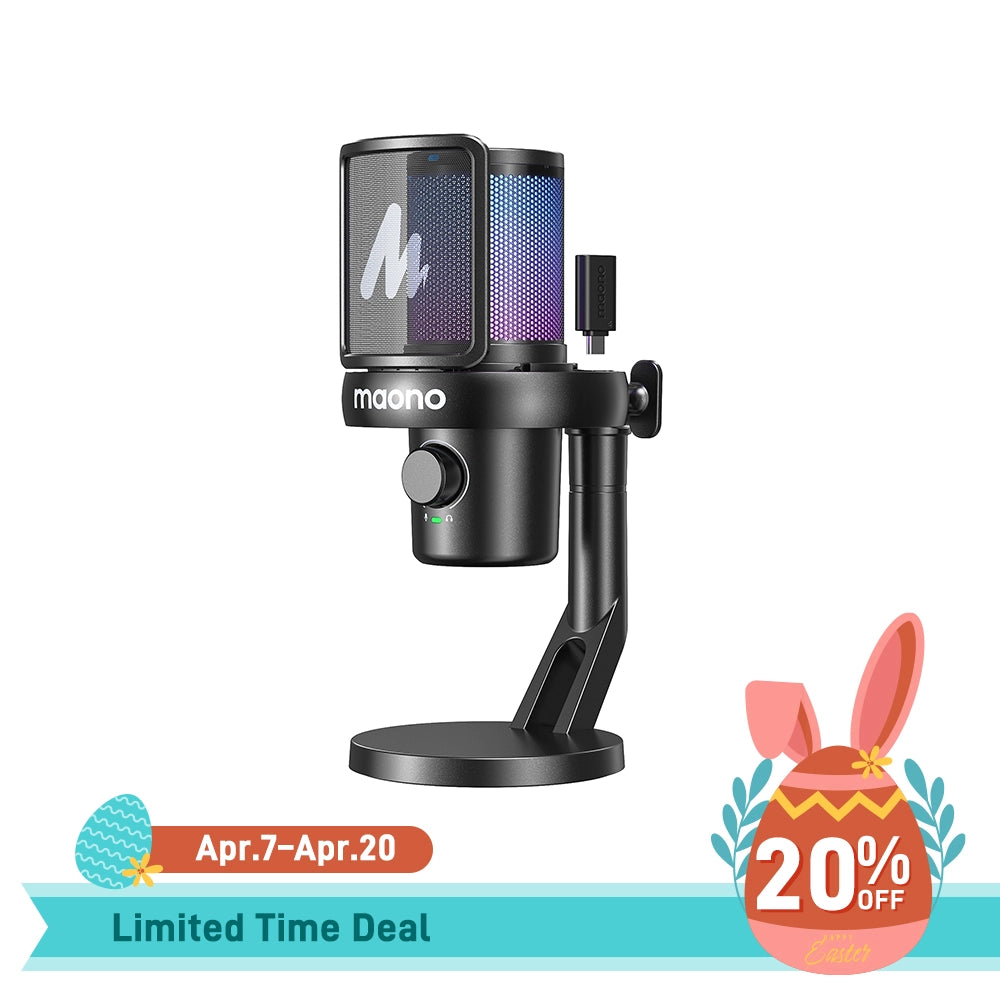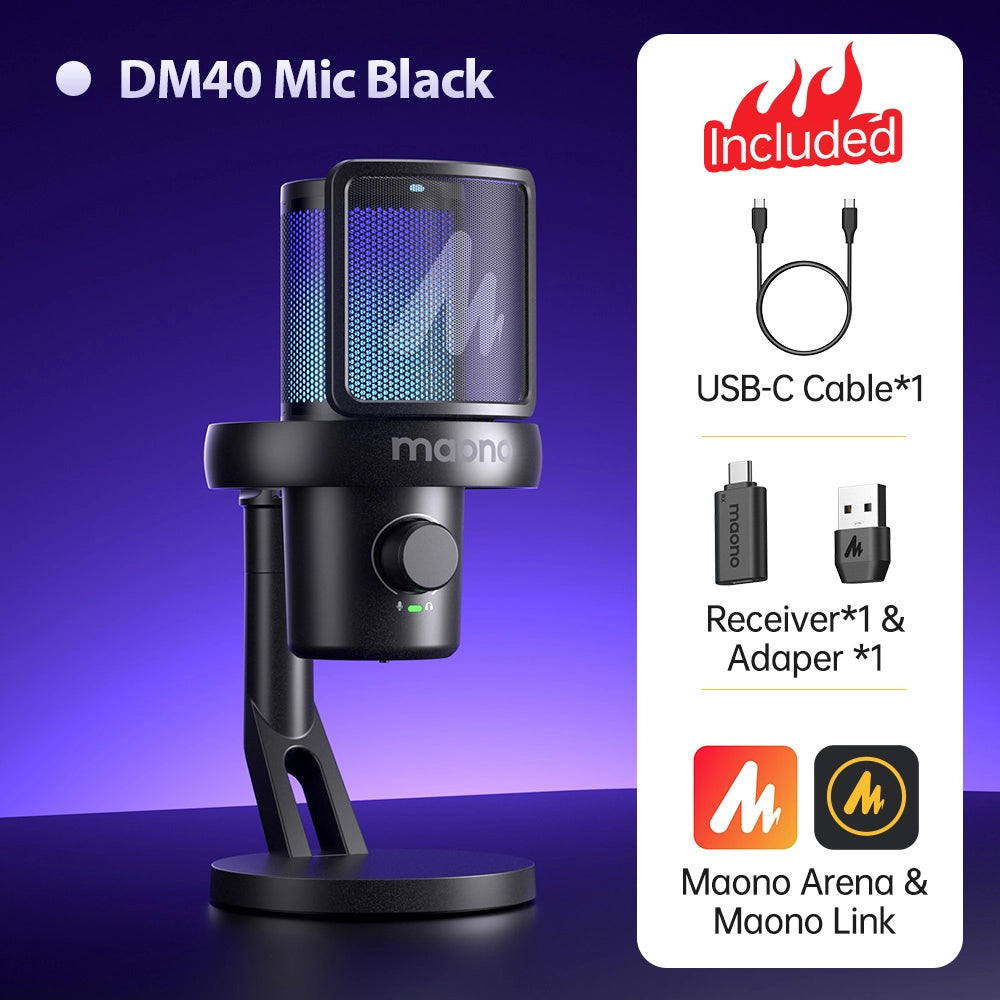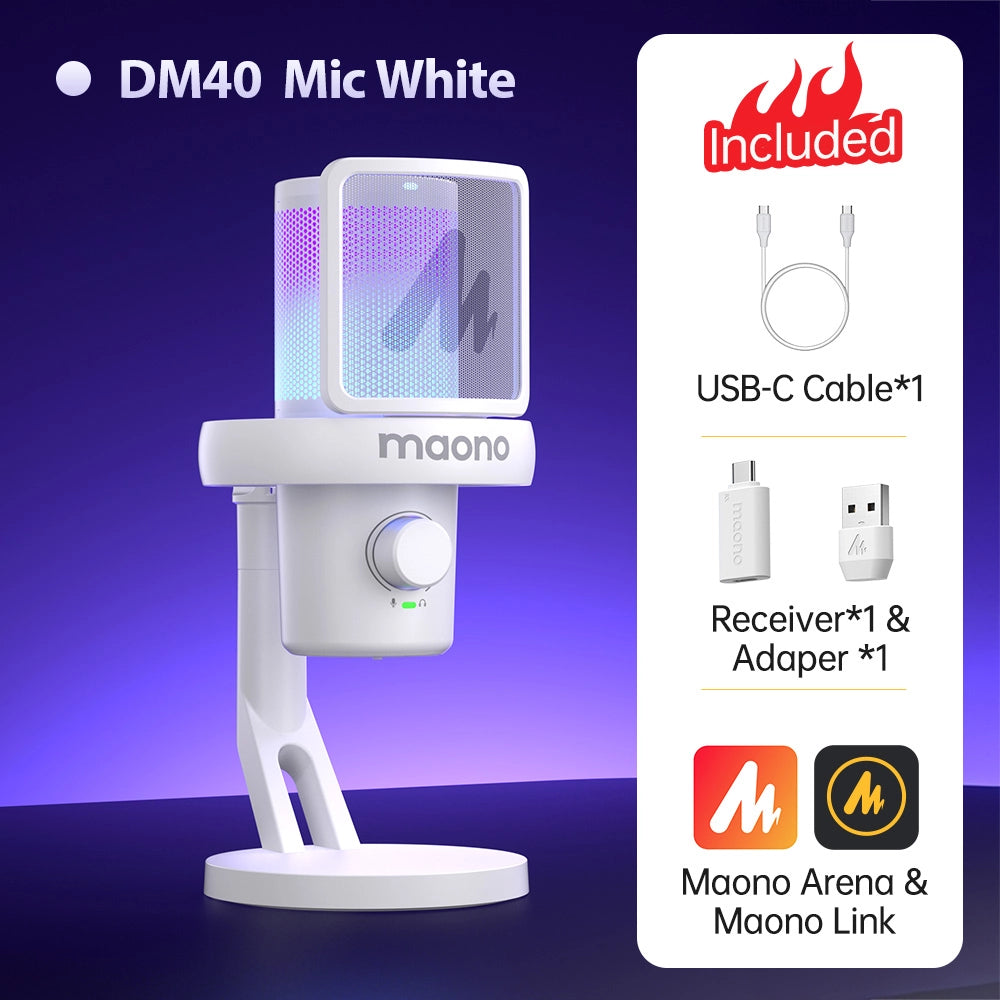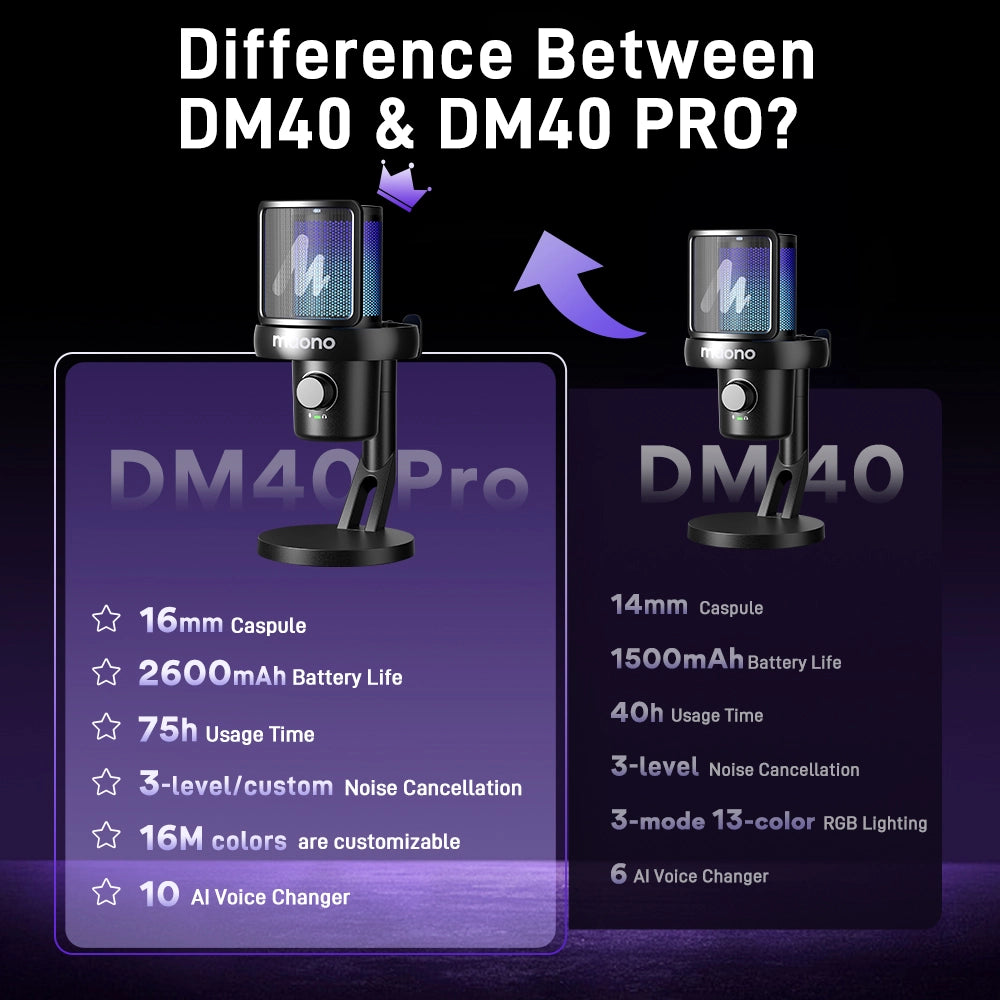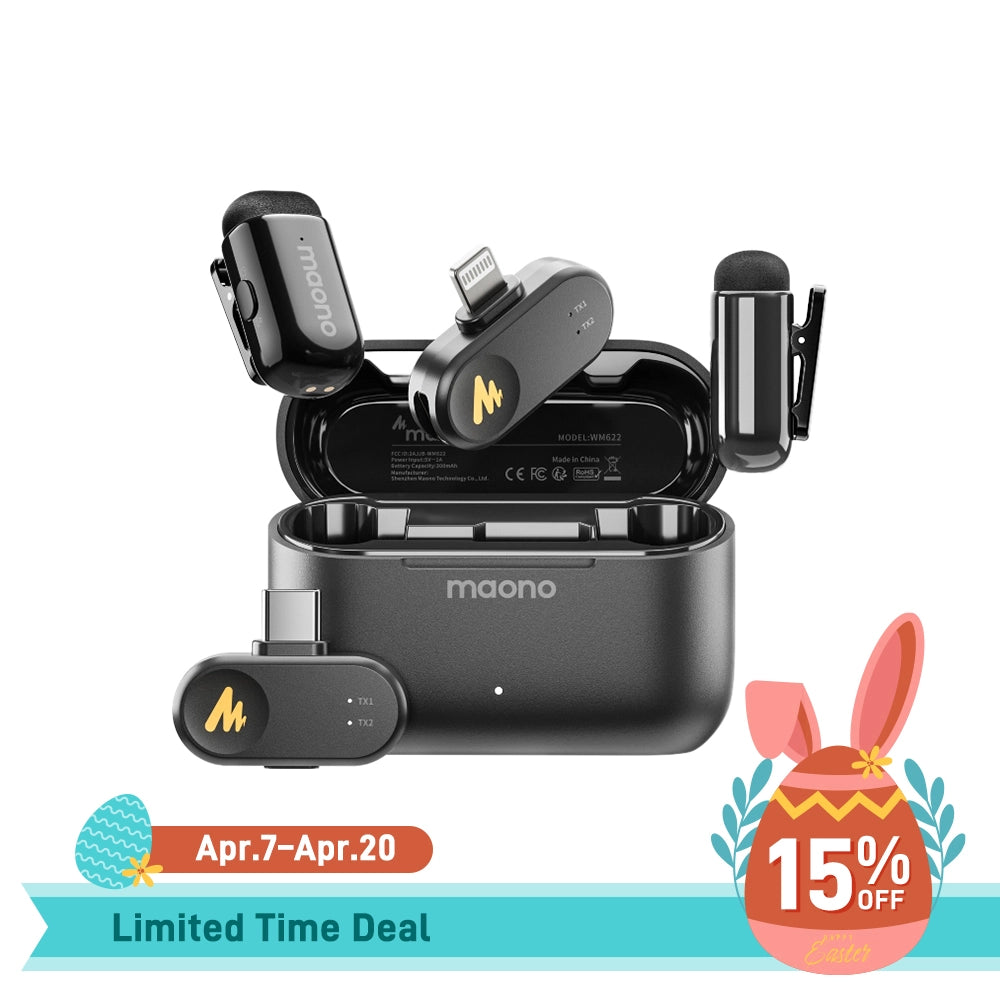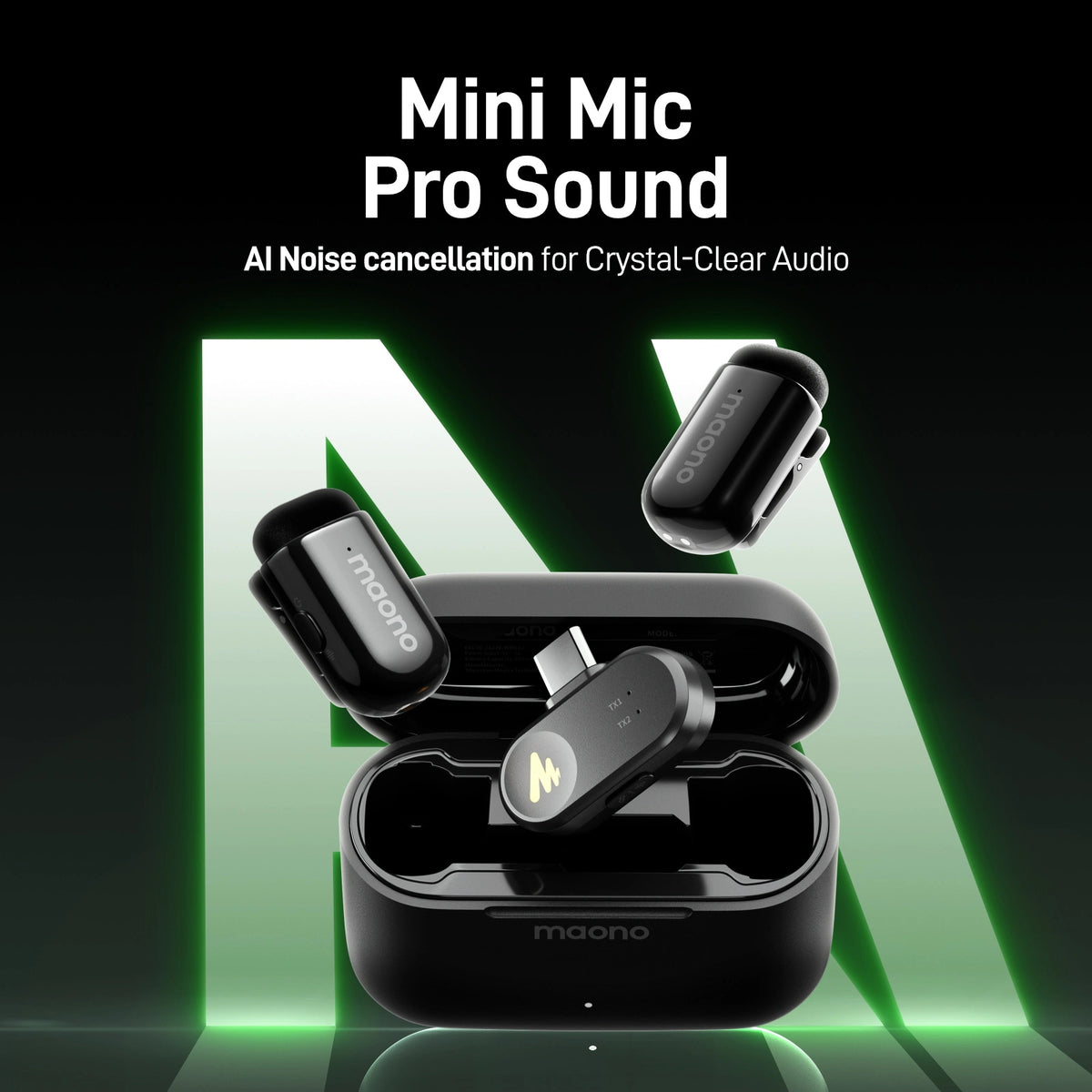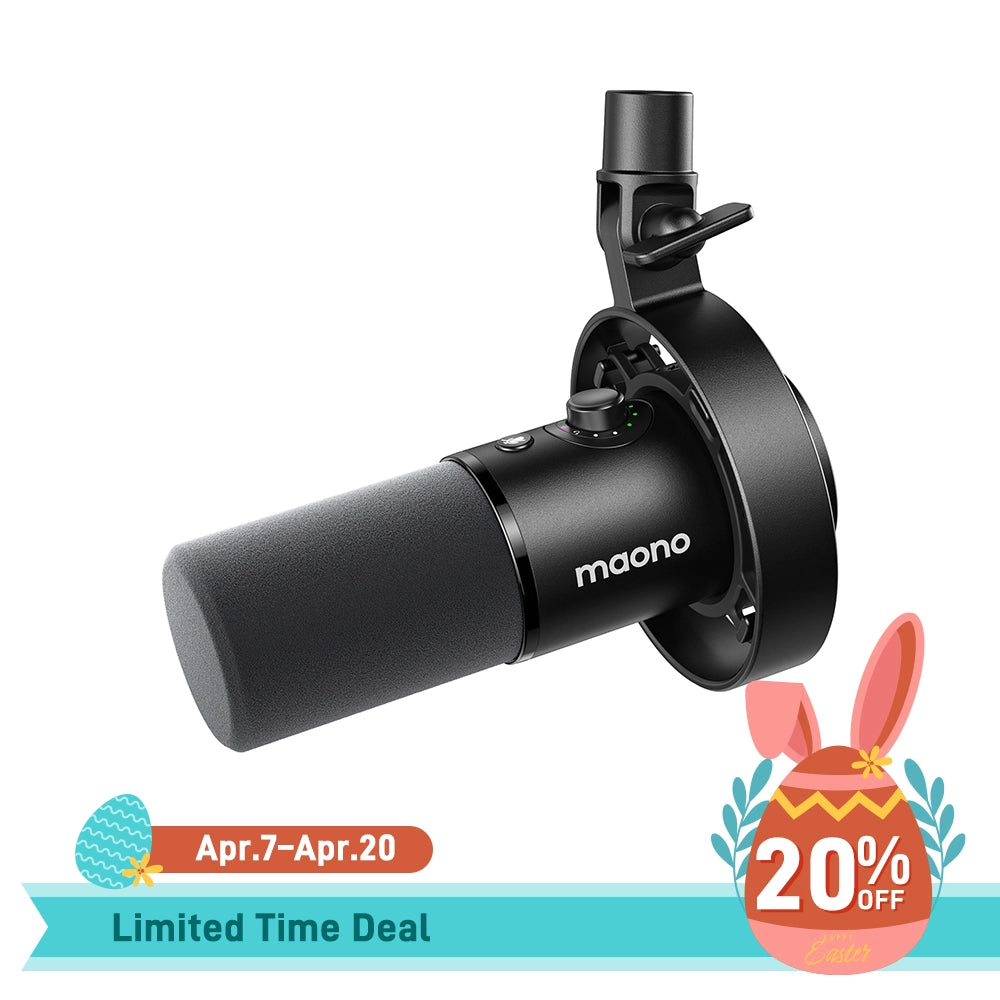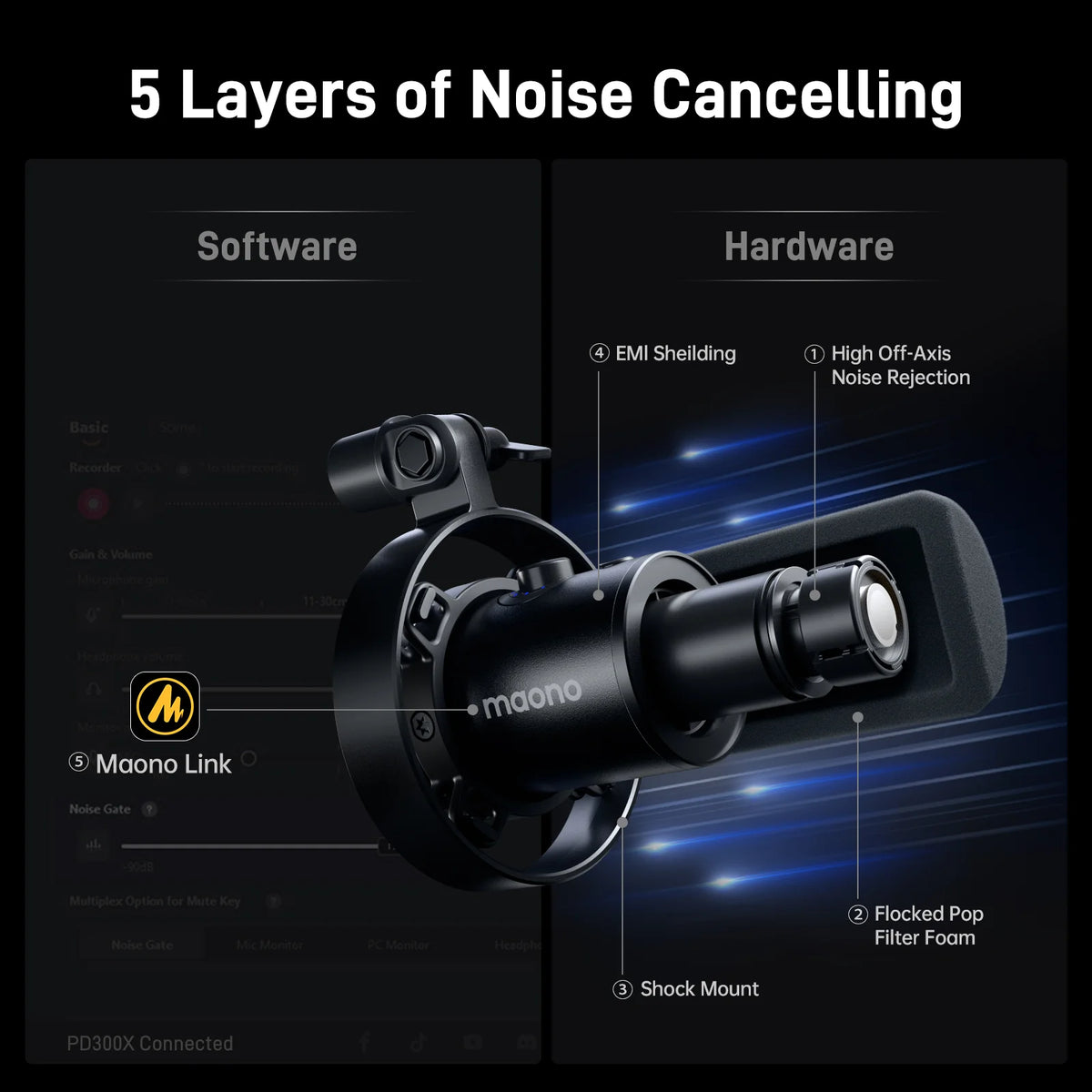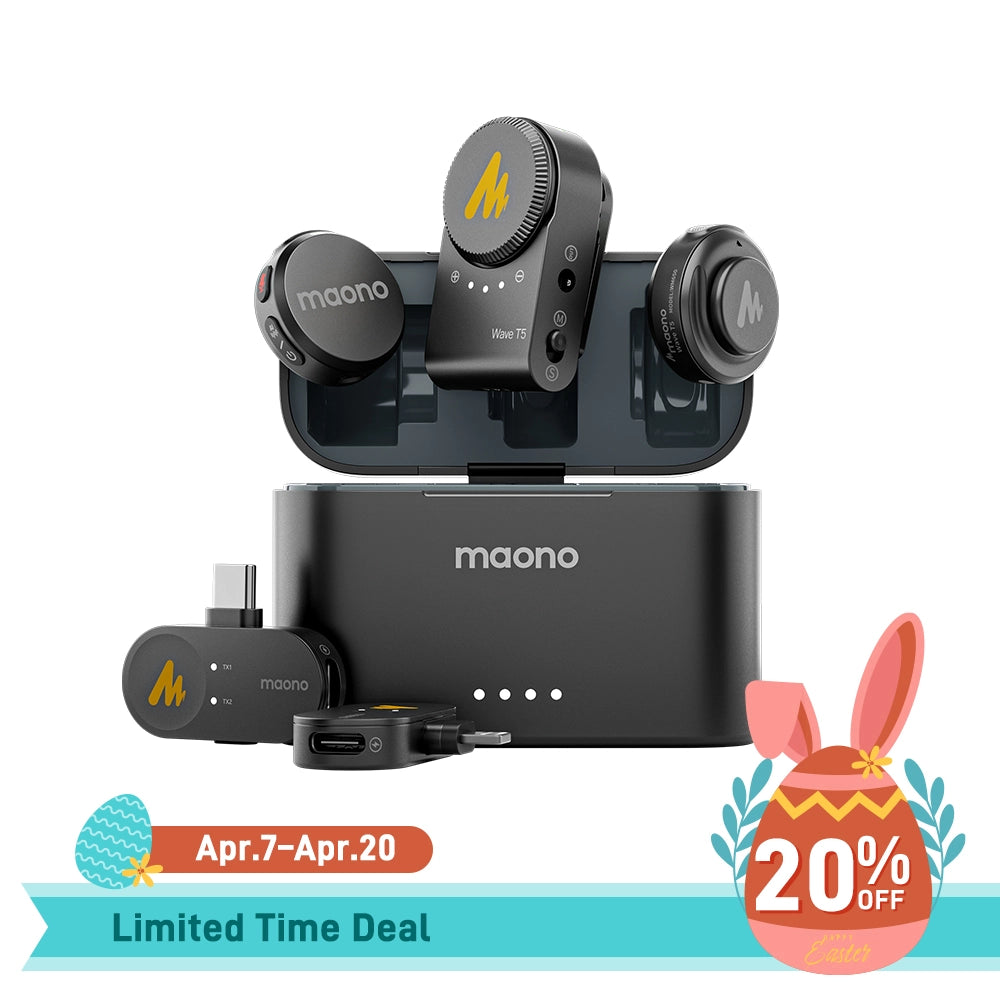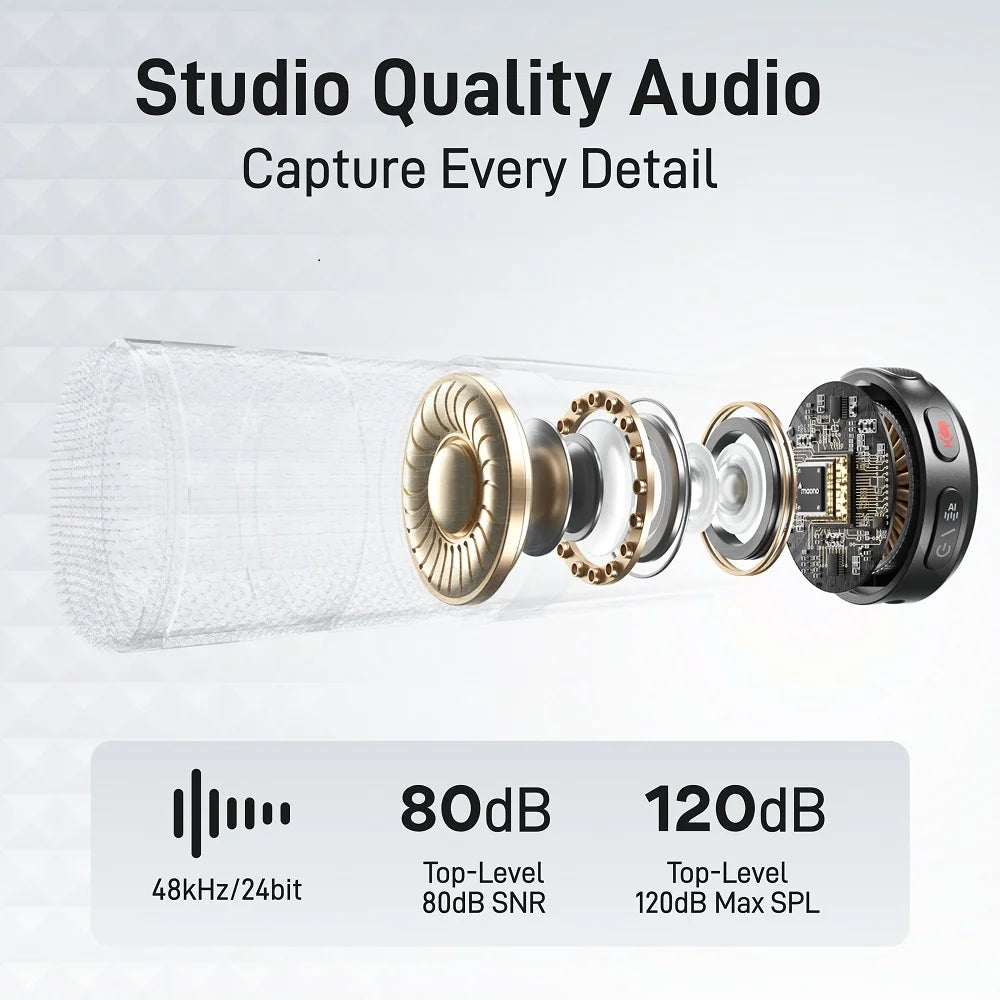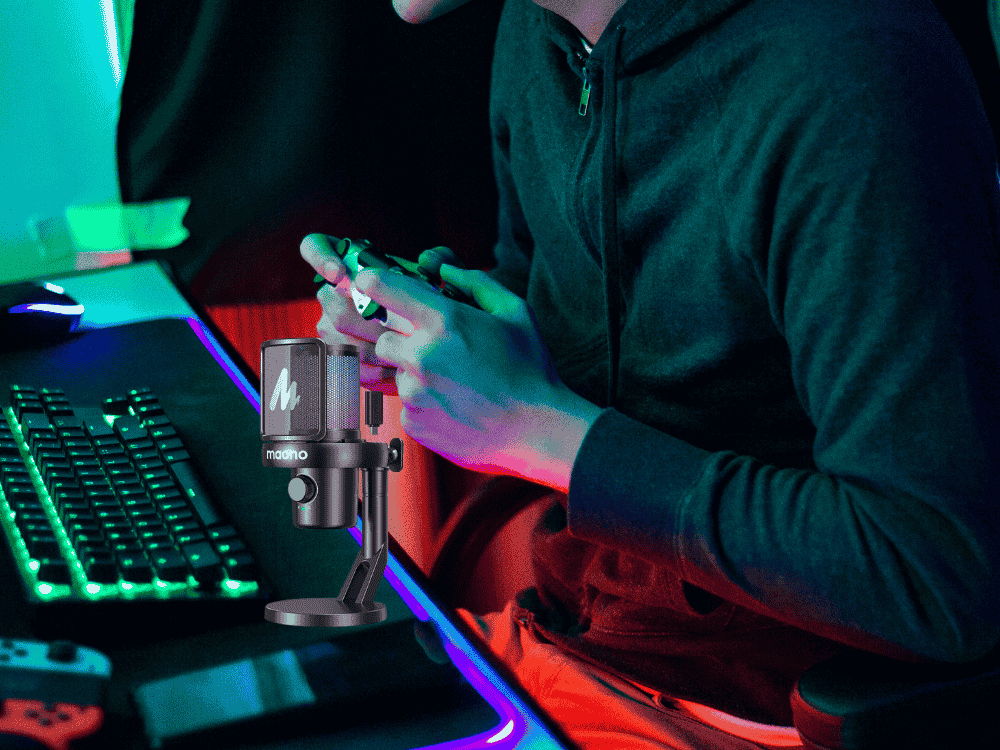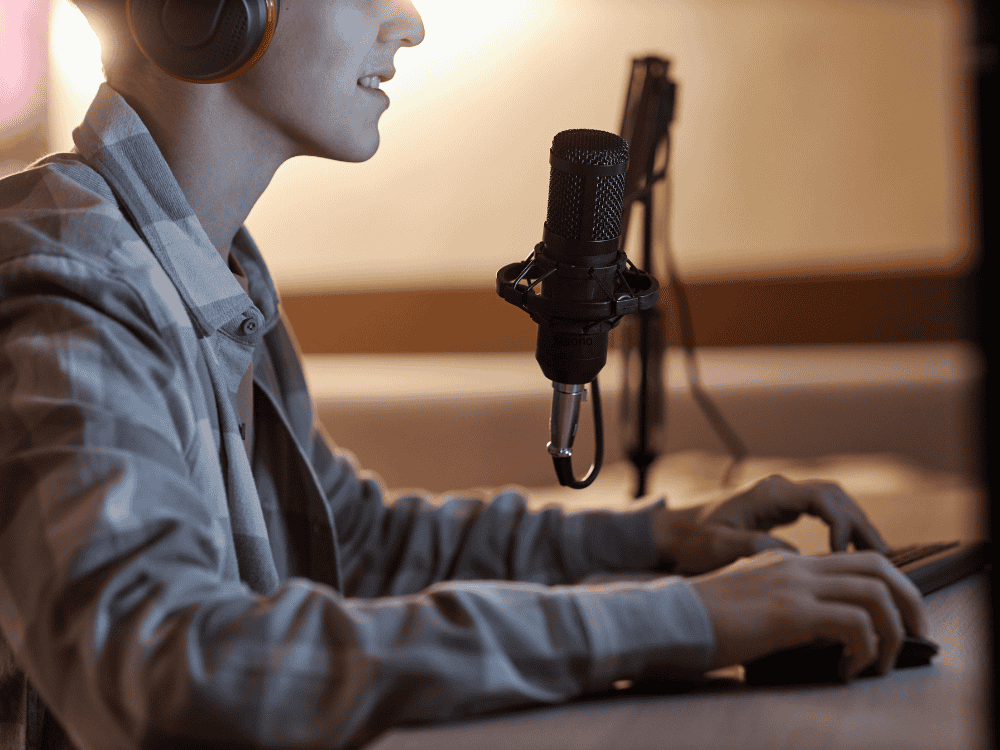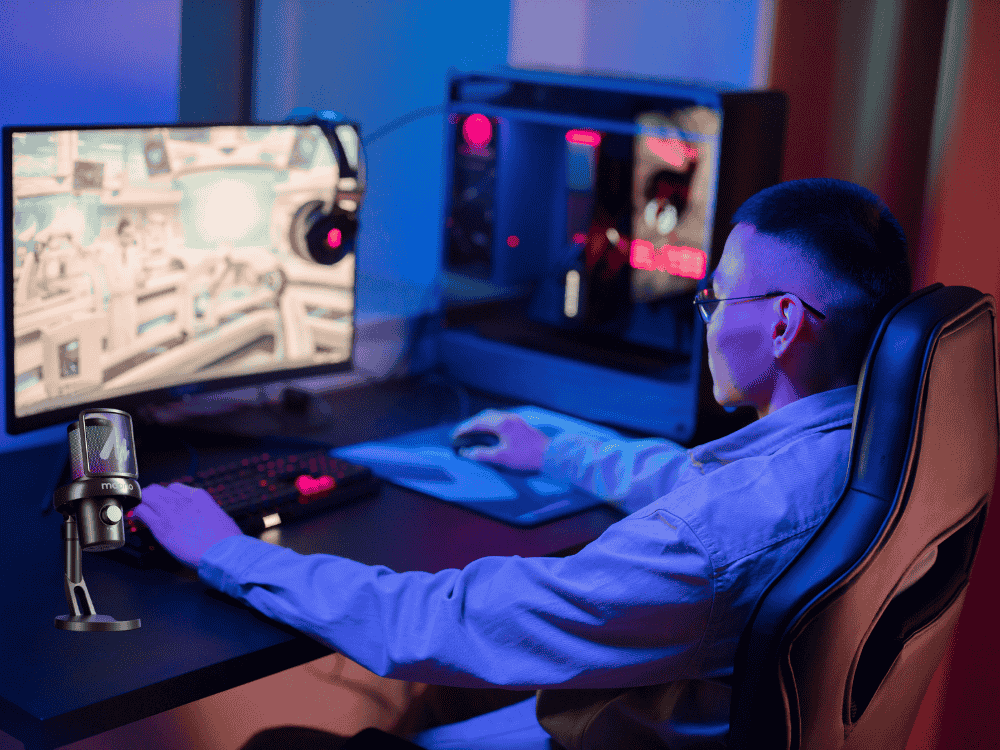Have you ever been curious about how well-known streamers began their game streaming careers? Whether you're an occasional gamer or a full-time gaming enthusiast, maybe you're wondering what is needed to get started.
To start streaming games, you need to select the right equipment, decide on the streaming platforms that suits your style and gaming setup, and understand what software is the best to use for your streaming setup.
Imagine you’re diving into an epic gaming session, but the action is so intense that even a hiccup in performance could disrupt your stream. To ensure your audience experiences the highest quality without a hitch, you need more than just a powerful gaming rig—you need a robust streaming setup. Enter the 2 PC streaming setup with a capture card, a game-changer that lets you separate your gaming and streaming tasks for unparalleled performance and clarity. In this guide, we'll walk you through setting up this powerful configuration, unlocking the secret to a seamless, professional streaming experience that can elevate your content and keep your viewers engaged. Ready to level up your streaming game?
This article will guide you through the essential equipment and software that you will need in game streaming, and help you choose the best microphone for live streaming setup, and how to set up a 2 PC streaming setup with a capture card. Let’s get started!
Related: How to Build Up Yourself A Gaming and Streaming Set Up at Home
How To Start Streaming Games? Understanding the Basics
Game streaming is the live broadcasting of video game play on the Internet for others to watch. Viewers can see the game as it's being played in real-time and often hear the streamer talk about what they're doing, respond to viewer comments, and show of their gaming skills. This can be done via platforms like Twitch, Kick.com, YouTube Gaming, Discord Gaming, and Facebook Gaming.
Game streaming can be a real career that provides many ways to make money and grow personally. However, it demands a lot of hard work, consistency, dedication, and skill improvement. With the right strategy and some luck, streamers can turn their love for gaming into a lasting career.
How To Start Streaming? A Comprehensive Guide to Setting Up a 2 PC Streaming Setup
Streaming has rapidly transformed into a vibrant medium for gamers, content creators, and entertainers around the world, allowing them to connect with audiences in real-time. If you’ve ever thought about sharing your gaming experiences or showcasing your creative talents, getting started with streaming can be an exciting endeavor. But how do you take that first step? Let's explore the essential prerequisites for diving into the world of streaming, specifically focusing on setting up a dual-PC streaming setup.
First and foremost, selecting the right equipment is crucial. A reliable gaming PC and a dedicated streaming PC can significantly enhance your streaming quality, allowing for smoother gameplay and higher-resolution streams. Next, you’ll need to decide on the streaming platform that best suits your style, whether it’s Twitch, YouTube, or another service. Each platform has its own audience and features, so consider what aligns with your content goals.
Understanding the software is another vital aspect of your streaming setup. Tools like OBS Studio, Streamlabs, or XSplit will allow you to capture your gameplay, add overlays, and engage with your audience effectively. Familiarizing yourself with these applications will enable you to customize your stream and deliver a polished viewing experience.
With the right equipment, a suitable platform, and a solid grasp of the necessary software, you’ll be well on your way to creating an engaging streaming presence. So, let’s dive deeper into each of these components to help you set up your ultimate streaming setup!
Main Platforms for Live Streaming

Different platforms cater to various audiences. Here are five main platforms for live streaming:
The most widely used platform is recognized for its large, diverse audience and strong community features.
This platform is perfect for individuals who are already established on YouTube and seek to engage with their subscriber audience.
An excellent platform for connecting with an audience already actively involved with your content on Facebook.
It's a dynamic platform designed for live streaming, offering a user-friendly interface and functional features to engage audiences.
It's a versatile gaming platform that not only facilitates communication among gamers through voice, video, and text channels but also offers a feature called "Go Live" for streaming games directly to friends and communities within Discord servers.
Choosing the Right Software for Streaming
Software options offer different tools for live streaming games, recording videos, adding cool graphics, adjusting sound, and communicating with viewers. Here are six options to choose from depending on what features you want and what will work on your computer:
OBS Studio is a free software known as Open Broadcaster Software that is widely used by gamers, YouTubers, and professionals for live streaming and video recording. With its user-friendly features, it allows customization of video scenes, addition of elements, and sound control, making it compatible with various platforms like Twitch, YouTube, and Facebook Gaming, and suitable for creating impressive streams with ease.
- Streamlabs OBS (SLOBS)
It’s a popular software designed for live streaming and content creation, offering an all-in-one solution with various features tailored for streamers. With seamless integration with platforms like Twitch, YouTube, and Facebook Gaming, SLOBS provides an easy-to-use interface for setting up streams, adding backgrounds, and alerts, and engaging with viewers through chat features and widgets, ultimately enhancing the streaming experience for both streamers and viewers.
XSplit is software designed to help people stream live videos and create content, offering features like gameplay recording and editing tools. It seamlessly integrates with popular streaming platforms like Twitch and YouTube, making it easy to start streaming quickly, and its user-friendly design makes it suitable for both beginners and experienced streamers. Additionally, XSplit provides a variety of templates and extras to enhance the appearance of streams and keep viewers engaged, making it a top choice for streaming games.
NVIDIA GeForce Experience is a software designed for users of NVIDIA graphics cards, primarily known for optimizing game performance and updating graphics card drivers. Additionally, it includes features like "NVIDIA Share" or "NVIDIA ShadowPlay," allowing users to record gameplay videos and stream live to platforms like Twitch and YouTube directly from their computers. GeForce Experience simplifies the process of recording gaming moments, taking screenshots, and streaming to preferred platforms, all while ensuring minimal impact on computer performance, making it a convenient tool for NVIDIA graphics card users to create content and stream games.
It’s a set of programs designed for AMD graphics card users, primarily aimed at improving gaming performance and ensuring graphics card functionality. It also offers features for streaming games and creating videos, allowing users to easily record gameplay videos or stream live to platforms like Twitch and YouTube directly from their computers. Radeon Software is user-friendly and minimally impacts computer performance, making it an excellent choice for AMD graphics card users looking to stream games and create videos.
Arena serves as a middleman between your different audio sources and your stream, managing all audio routing. With each source having its own channel and volume control within UNIFY, you can independently adjust their volumes. This ensures a balanced audio mix, simplifying the setup for streaming without the need for reconfigurations in your streaming software.

OBS vs SLOBS
Choosing between OBS (Open Broadcaster Software) and SLOBS (Streamlabs OBS) depends on your specific needs and preferences. Here's a comparison review to help you decide:OBS (Open Broadcaster Software)
Pros:
- Customization: Offers extensive customization options for scenes, sources, and layouts.
- Flexibility: Supports a wide range of plugins and third-party integrations for advanced features.
- Open-Source: Constantly updated by a community of developers, ensuring frequent improvements and bug fixes.
- Resource Efficiency: Generally lighter on system resources compared to SLOBS.
Cons:
- Steep Learning Curve: Beginners may find it challenging to set up initially due to its vast array of features.
- No Built-in Integration: Lacks direct integration with platforms like Twitch or YouTube; settings need to be manually configured.
SLOBS (Streamlabs OBS)
Pros:
✅ User-Friendly: Designed with a more intuitive interface, making it easier for beginners to set up and use.
✅ Integrated Features: Includes built-in widgets, alerts, and overlays for streamers, simplifying setup.
✅ Direct Integration: Seamless integration with platforms like Twitch, YouTube, and others, streamlining streaming setup.
✅ Cloud Backup: Offers cloud-based backup and restore functionality for scenes and settings.
Cons:
❌ Limited Customization: Compared to OBS, customization options may be more restricted.
❌ Resource Intensive: Can be more demanding on system resources, especially with added plugins and widgets.
❌ Dependency on Streamlabs Ecosystem: Users may feel locked into Streamlabs' ecosystem for additional features.
Summary:
Choose OBS if:
✅ You prefer extensive customization and flexibility.
✅ You have experience with streaming software and want full control over your setup.
✅ You value open-source software and community-driven development.
Choose SLOBS if:
✅ You're new to streaming and prefer a user-friendly interface.
✅ Integrated features like alerts and overlays are important to you.
✅ You want streamlined integration with popular streaming platforms without extensive setup.
Ultimately, both OBS and SLOBS are powerful tools, each with its strengths and target audience. Your choice should align with your specific streaming goals, technical proficiency, and desired level of customization.
Step-by-Step Guide: How to Use Open Broadcaster Software (OBS) for Streaming on YouTube
If you decide to choose using OBS, here's a step-by-step guide on how to use it:
- Visit the official OBS website and download the software suitable for your operating system.
- Follow the installation instructions to set up OBS on your computer.
- Log in to your YouTube account and navigate to YouTube Studio.
- Go to the "Content" tab and click on "Go live" to start setting up a new stream.
3. Configure OBS Settings:
- Open OBS and go to "Settings" from the bottom-right corner.
- Under the "Stream" tab, select "YouTube/YouTube Gaming" from the Service dropdown menu.
- Copy the Stream Key from YouTube Studio and paste it into the Stream Key field in OBS.
- Adjust other settings like bitrate, encoder, and resolution based on YouTube's recommended settings for your internet connection.
- Click on the "+" under the "Scenes" box to create a new scene (e.g., Gameplay, Webcam).
- Within each scene, click on the "+" under the "Sources" box to add sources like your game window (Game Capture), webcam (Video Capture Device), overlays (Image), and alerts (Browser Source).
- Drag and resize sources within each scene to achieve the desired layout.
- Use the "Lock" icon to prevent accidental movements.
- Click "Start Streaming" in OBS.
- Go back to YouTube Studio and click "Go live" to see your stream preview.
- Ensure all sources are visible and audio levels are balanced.
7. Optimize Video and Audio Quality:
- Use a high-quality webcam and microphone for clearer audio and visuals.
- Set bitrate and resolution settings in OBS according to YouTube's recommendations for optimal streaming quality.
- Keep an eye on OBS' performance metrics (CPU usage, dropped frames).
- Adjust settings if necessary to maintain smooth streaming without interruptions.
- Interact with viewers through YouTube's live chat feature.
- Encourage subscriptions and likes during your stream.
- After streaming, review your stream analytics in YouTube Studio.
- Identify areas for improvement based on viewer engagement and feedback.
How to Mute Discord Audio on OBS
Why Mute Discord Audio on OBS?
You may wish to keep your Discord conversations private when streaming games, or make sure they don't affect the audio quality of your stream. You can efficiently manage your audio sources with OBS (Open Broadcaster Software), which includes muting Discord audio.
Steps on How to Mute Discord Audio on OBS
Step#1: Open OBS Studio
Launch OBS on your PC. For optimal functionality and features, ensure it is updated to the most recent version.
Step#2: Add Discord as an Audio Source
If Discord isn't set up as an audio source yet, go to Settings > Audio in OBS and choose your desktop audio device (the one that Discord is using for sound).
Step#3: Access Audio Mixer
Find the Audio Mixer panel in the main OBS interface. The active audio sources are all shown in this section.
Step#4: Identify the Discord Audio Source
Locate the audio source that matches your desktop sound or the device Discord uses for audio.
Step#5: Mute the Audio Source
Next to the audio source you've identified, click the mute button (speaker symbol). Discord and all other audio originating from that source will be muted as a result.
Step#6: Advanced Audio Settings (Optional):
To have additional control, select Advanced Audio Properties from the Audio Mixer by clicking the gear icon next to the audio source. You can muffle, output, or monitor particular audio sources here.
Step#7: Test Your Settings
Make sure the audio in Discord is muted by recording or doing a test stream. Talk to someone in your Discord channel, then make sure their voice isn't heard during the streaming or recording.
Tips for Managing Audio Sources in OBS
- Create Separate Audio Tracks
You can designate various audio sources to distinct tracks in Advanced Audio Properties. This is helpful for post-production editing.
- Use Discord's Push-to-Talk feature
Use Discord's Push-to-Talk feature to further control the audio that is played. This way, when you press a particular key, only relevant conversations are heard.
Troubleshooting:
-
Audio Source Not Muting
-
Audio Delay Issues
Why a 2 PC Setup is Ideal for Game Streaming
In game streaming, the quality of your broadcast can make a significant difference in how your audience experiences your content. A 2 PC setup has become a popular choice among serious streamers for several compelling reasons:
1. Enhanced Performance
Using one PC for gaming and another for streaming separates the demands placed on each system. The gaming PC focuses solely on running the game, ensuring maximum performance and frame rates. Meanwhile, the streaming PC handles the encoding and broadcasting of the stream. This division of labor helps prevent performance issues, such as lag or dropped frames, that can occur when a single PC is overloaded with both tasks.
2. Improved Stream Quality
A dedicated streaming PC equipped with a capture card can handle high-resolution and high-bitrate streams more efficiently. The capture card transfers high-quality video and audio from your gaming PC to the streaming PC, allowing you to broadcast at superior quality without compromising the performance of your game. This results in a smoother, more professional-looking stream with clearer audio and video.
3. Reduced System Overhead
Running a game and streaming software on the same PC can strain your system’s resources, potentially leading to performance dips or system crashes. A 2 PC setup alleviates this by distributing the workload. Your gaming PC can be optimized for gameplay, while the streaming PC is dedicated to processing and broadcasting, leading to a more stable and reliable streaming experience.
4. Flexibility and Customization
With two PCs, you have more flexibility to customize each system according to its specific role. The gaming PC can be configured for maximum graphical performance, while the streaming PC can be equipped with additional resources for handling streaming software, overlays, and real-time editing. This allows for a more tailored setup that can adapt to your streaming needs.
5. Enhanced Control and Troubleshooting
A 2 PC setup provides a level of redundancy that can be crucial during live streams. If issues arise with your gaming PC, the streaming PC continues to broadcast, allowing you to address any problems without interrupting your stream. Additionally, having separate systems simplifies troubleshooting, as you can isolate issues more effectively and address them without impacting your audience.
Overall, a 2 PC setup offers a significant advantage in terms of performance, stream quality, and flexibility, making it an ideal choice for streamers looking to elevate their content and provide a professional experience for their viewers.
How to Use a Capture Card for Game Streaming
Setting up a 2 PC streaming system with a capture card can significantly enhance your streaming quality and performance. Here’s a quick guide to get you started:
1. Gather Your Equipment
- Streaming PC: Handles the encoding and broadcasting of your stream.
- Gaming PC: Runs your game and generates the content.
- Capture Card: Captures the video and audio output from your gaming PC to your streaming PC.
- Cables: HDMI cables, USB cables, and any necessary adapters.
- Software: Streaming software (e.g., OBS Studio, Streamlabs OBS) and capture card drivers.
2. Connect Your Gaming PC to the Capture Card
- HDMI Out: Connect an HDMI cable from your gaming PC’s graphics card output to the HDMI input on your capture card.
- Capture Card to Streaming PC: Connect the capture card to your streaming PC using a USB cable.
3. Set Up the Capture Card
- Install Drivers: Download and install the latest drivers for your capture card from the manufacturer’s website.
- Configure Software: Open your streaming software (e.g., OBS Studio). Add a new video source and select your capture card from the list of devices.
4. Configure Audio and Video Settings
- Audio: Ensure that the audio settings in your streaming software are configured to capture the audio from your gaming PC.
- Video: Adjust the video settings (resolution, frame rate) in your streaming software to match your desired output quality.
5. Test Your Setup
- Check Video and Audio: Run a test stream to ensure that the video and audio are coming through correctly from your gaming PC to your streaming PC.
- Adjust Settings: Fine-tune your settings as needed for optimal performance and quality.
6. Start Streaming
- Go Live: Once everything is set up and tested, start your stream on your streaming software and enjoy broadcasting high-quality gameplay to your audience.
How to Set Up Your Streaming PC
Recommendations for Capture cards, PCs, and other related Equipment
When setting up a 2 PC streaming system with a capture card, selecting the right equipment is crucial for achieving high-quality streams. Here’s a detailed comparison and recommendations for capture cards, PCs, and other related equipment:
1. Capture Cards
Capture cards are essential for transferring video and audio from your gaming PC to your streaming PC. Here are some top options:
- Elgato HD60 X
Resolution & Frame Rate: Supports 1080p at 60fps and 4K passthrough.
Latency: Low latency for real-time streaming.
Compatibility: Works with Windows and macOS.
Best For: Streamers who need high-quality 1080p60 streaming with 4K passthrough capabilities. Ideal for most casual to intermediate streamers.
- AVerMedia Live Gamer 4K
Resolution & Frame Rate: Supports 4K at 60fps and 1080p at 240fps.
Latency: Ultra-low latency for smooth streaming.
Compatibility: Works with Windows.
Best For: Streamers looking for high-end 4K capture and lower latency. Perfect for those who want to future-proof their setup or who are streaming at ultra-high resolutions.
- Razer Ripsaw HD
Resolution & Frame Rate: Supports 1080p at 60fps and 4K passthrough.
Latency: Low latency for real-time interaction.
Compatibility: Works with Windows and macOS.
Best For: Gamers who need high-quality streaming with a reliable, user-friendly capture card. Great for those who value ease of use.
2. Streaming PCs
Your streaming PC should be capable of handling encoding tasks without impacting your gaming performance. Here are some recommended configurations:
- Budget Build
CPU: AMD Ryzen 5 5600X or Intel Core i5-12400F.
GPU: NVIDIA GTX 1660 Super or AMD RX 6600.
RAM: 16GB DDR4.
Storage: 500GB SSD.
Best For: Streamers on a budget who need decent performance for encoding and multitasking without breaking the bank.
- Mid-Range Build
CPU: AMD Ryzen 7 5800X or Intel Core i7-13700K.
GPU: NVIDIA RTX 3060 Ti or AMD RX 6700 XT.
RAM: 32GB DDR4.
Storage: 1TB NVMe SSD.
Best For: Streamers looking for a balance between cost and performance. This build handles most encoding tasks and multitasking comfortably.
- High-End Build
CPU: AMD Ryzen 9 7950X or Intel Core i9-13900K.
GPU: NVIDIA RTX 4080 or AMD RX 7900 XTX.
RAM: 32GB or 64GB DDR5.
Storage: 1TB NVMe SSD and additional HDD for storage.
Best For: Professional streamers who need top-tier performance for both streaming and other intensive tasks, such as video editing or running multiple applications simultaneously.
3. Other Essential Equipment
- Microphone
Maono DM30RGB: High-quality USB microphone with aesthetic RGB lighting and noise reduction. Great for clear and professional audio and microphone game control for volume adjustment and seamless gaming.
DGM20 GamerWave: High performance USB microphone renowned for its RGB lighting effects, and noise canceling feature.
PD200X - Dynamic USB & XLR microphone popular for its broadcast-quality sound. Requires an audio interface or mixer if you use the XLR option. Perfectly suitable for the Maonocaster C2 Neo audio mixer and sound card.
- Webcam
Logitech C920: 1080p webcam known for its good performance and affordability. Ideal for streamers who need reliable, high-definition video.
Elgato Facecam: High-quality 1080p60 webcam designed for streamers, with advanced settings and high image quality.
- Lighting
Elgato Key Light: Adjustable brightness and color temperature, specifically designed for streamers.
Neewer Ring Light: Affordable and versatile, provides even lighting for your face and environment.
Audio Interface (for XLR mics)
Focusrite Scarlett 2i2: Reliable and high-quality audio interface for connecting XLR microphones.
Maonocaster AM C2 Neo: Combines an audio interface with mixer functionality, offering excellent control over audio levels and effects.
Summary: Essential Equipment for Streaming
To setup a streaming PC, remember the following points:
- For High-Quality 1080p Streaming: Elgato HD60 X and a mid-range streaming PC (Ryzen 7 5800X or i7-13700K) offer a great balance of performance and affordability.
- For 4K Streaming: AVerMedia Live Gamer 4K and a high-end streaming PC (Ryzen 9 7950X or i9-13900K) are ideal for top-tier quality and future-proofing.
- For Professional Audio and Video: Invest in high-quality microphones like the PD200X, alternatively you can opt for the budget friendly options: the DM30RGB and DGM20 GamerWave, reliable webcams like the Elgato Facecam, and appropriate lighting to ensure a polished and engaging streaming presentation.
For accessories, you can also read this article for more recommendations.
5 Common Troubleshooting Tips Specific to Using Capture Cards with a 2 PC Setup
1. No Signal on Streaming PC
Issue: Your streaming PC is not receiving a signal from the gaming PC.
Solution:
Check Connections: Ensure all cables (HDMI from the gaming PC to the capture card, and USB from the capture card to the streaming PC) are securely connected.
Verify Input Source: In your streaming software (e.g., OBS Studio), make sure the capture card is selected as the video source. Sometimes, you may need to re-add the capture card source or adjust settings.
Update Drivers: Ensure that the capture card’s drivers are up to date. Visit the manufacturer’s website for the latest driver versions.
2. Audio Desynchronization
Issue: The audio and video are not synced correctly.
Solution:
Adjust Audio Delay: Most streaming software (like OBS Studio) allows you to add an audio delay to synchronize the audio with the video. Adjust the audio delay settings in the software to match the video.
Check Capture Card Settings: Some capture cards have settings for audio synchronization. Ensure these settings are properly configured according to the manufacturer's guidelines.
Monitor Latency: Check if there’s a noticeable delay between gameplay and the capture card output. If so, adjust the buffering or latency settings in your capture software.
3. Low Frame Rate or Stuttering
Issue: The video feed from your gaming PC appears choppy or stuttery on the streaming PC.
Solution:
Adjust Capture Settings: Lower the resolution or frame rate settings in your capture card’s configuration software or streaming software to reduce the load on your streaming PC.
Check PC Performance: Ensure your streaming PC is not overloaded with other tasks. Close unnecessary applications and processes to free up resources.
Inspect Cables: Ensure that all HDMI cables are high-speed and not damaged. Poor-quality or damaged cables can affect the video feed quality.
4. No Audio from Capture Card
Issue: The capture card is capturing video but no audio.
Solution:
Verify Audio Source: Check that the audio source is set correctly in your streaming software. Make sure the capture card is selected as the audio source.
Check Audio Settings: In your capture card’s settings, ensure that audio capture is enabled and configured correctly.
Inspect Connections: Confirm that all audio cables (if used separately from HDMI) are properly connected. Sometimes, audio might be routed through a different output or input.
5. Capture Card Not Recognized by Streaming Software
Issue: Your streaming software does not detect the capture card.
Solution:
Restart Devices: Restart both your gaming PC and streaming PC to refresh connections and software.
Reinstall Drivers: Uninstall and then reinstall the capture card’s drivers. Sometimes, a clean installation can resolve recognition issues.
Test on Another PC: If possible, connect the capture card to another PC to determine if the issue is with the card or the original streaming PC.
Steps to Becoming a Successful Game Streamer
Best USB Microphone for Streaming
Now that you know what software to use, it's time to pick a suitable game streaming microphone. If you want to invest in the best streaming mic under $100, consider a Maono USB microphone for your live broadcast. Beginners often choose the DM30RGB or the DGM20 GamerWave microphone. The PD200X microphone is slightly more expensive than the other two because it has more features. It comes with a USB-C/XLR socket, which offers flexibility without needing multiple microphones, and it has built-in blowout foam for noise reduction. All of these USB microphones have a cardioid polar pattern, a one-tap mute function, controllable RGB light modes, gain adjustment, a noise-canceling feature, and compatibility with a boom arm accessory.
Frequently Asked Questions
1. What is the best time to go livestreaming?
The best time to go livestreaming depends on your target audience's schedule. Generally, evenings and weekends are optimal for reaching the highest number of viewers, as people are more likely to be available to watch during these times.
2. How do I improve my livestream?
To improve your livestream, focus on enhancing audio and video quality, engaging with your audience, and maintaining a consistent streaming schedule. Investing in a good microphone, camera, and lighting setup can significantly boost your stream's professionalism--that's how to start streaming. Additionally, interact with viewers through chat, respond to their comments, and create engaging content to keep them interested.
3. How many hours should a stream last, for beginners?
For beginners, it's advisable to start with shorter streams, around 1 to 2 hours. This allows you to build stamina, test your setup, and gradually grow your audience without overwhelming yourself. As you become more comfortable and gain viewers, you can increase the length of your streams.
4. Which one is better OBS or SLOBS?
Consumer reviews say that OBS consumes less CPU usage when streaming compared to SLOBS.
Conclusion
Hopefully, this article helps you get started with game streaming by covering the basics you need to know, such as understanding game streaming, picking the right platforms, choosing the best software, and picking the right microphone for your game streaming. Pay attention to creating a unique brand, interacting with your audience, improving your gaming skills, promoting your channel, and connecting with other streamers. It's important to invest in the right equipment, such as a computer or console, microphone, webcam, headset or speakers, a capture card for console streaming, and a stable Internet connection, to ensure a smooth streaming experience. Congratulations on taking your first steps into the world of game streaming! You’ve learned the essentials, and now it’s time to elevate your streaming experience. Once you’ve mastered the basics, dive deeper into the advanced techniques that can truly set your stream apart, and don't forget to check out high-quality audio equipment for your stream here at Maono.



